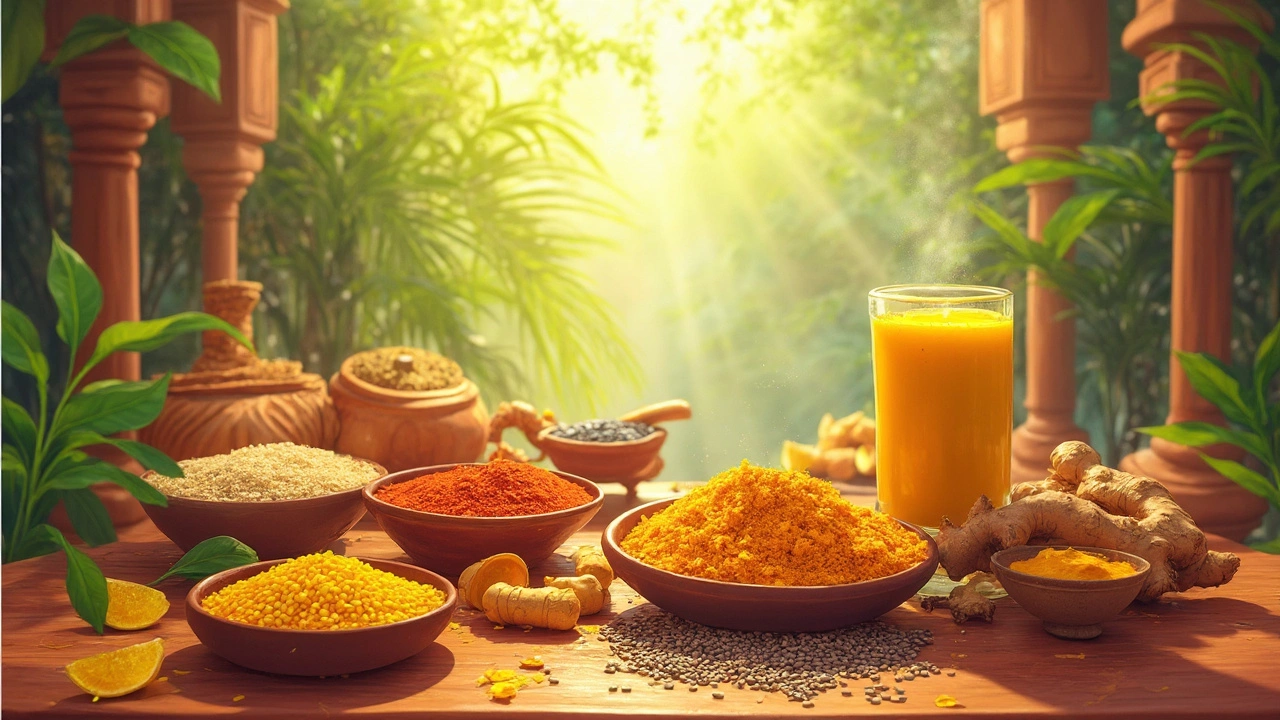Wellness Tips for Healthy Indian Cooking
When working with Wellness Tips, practical advice that helps you eat better, stay energized, and savor Indian flavors without compromising health. Also known as health tips, it guides food choices, cooking methods, and lifestyle habits for overall wellbeing. Alongside this, nutrition, the science of how food fuels the body forms the backbone of any wellness plan. Indian cuisine, a diverse culinary tradition rich in spices, legumes, and grains offers countless opportunities to apply those principles. Finally, food safety, practices that keep dishes safe from spoilage and contamination ensures the health benefits aren’t lost after cooking.
Wellness tips start with understanding what good dietary balance, the right mix of carbs, proteins, fats, vitamins, and minerals looks like on your plate. A balanced diet means your meals include a source of protein like paneer or tofu, a carbohydrate such as lentils or rice, and plenty of vegetables or fruits for fiber and micronutrients. When you pair these groups with mindful cooking—using minimal oil, avoiding over‑processing, and seasoning with spices instead of salt—you keep calorie density low while preserving flavor. Studies from Indian nutrition institutes show that meals built on this framework support steady energy, better digestion, and weight management.
Cooking techniques matter just as much as ingredient choices. In Indian cuisine, methods like tempering (tadka), steaming, and slow simmering help retain the heat‑sensitive nutrients found in spices, greens, and legumes. For instance, a quick tadka of mustard seeds and curry leaves over cooked dal not only adds aroma but also boosts the availability of antioxidants. Likewise, steaming idli or dumplings preserves the delicate protein structure of rice and lentils, making them easier to digest than deep‑fried variants. By choosing methods that protect nutrients, you turn each recipe into a genuine wellness boost.
Food Safety and Shelf‑Life Hacks
Even the healthiest recipe can turn risky if you ignore food safety. Proper storage of chutneys, pickles, and cooked grains extends their shelf life and prevents bacterial growth. A quick rule: keep fermented items like homemade chutney in the fridge and consume them within two weeks, while canned or pressure‑cooked goods can last up to three months if sealed correctly. When reheating leftovers, bring them to a rolling boil for at least one minute to kill lingering microbes. These simple steps ensure that the nutritional benefits you built into your meals stay intact until the very last bite.
Understanding sugar intake is another cornerstone of wellness. Recent surveys reveal that certain ethnic groups consume more added sugar than others, raising risks of obesity and diabetes. Indian households often add sugar to tea, desserts, and even savory dishes. Cutting back doesn’t mean sacrificing taste; you can replace refined sugar with natural sweeteners like jaggery or fruit purees, and balance flavors using a splash of lemon or a pinch of salt. By monitoring and adjusting sugar levels, you protect heart health while still enjoying traditional sweets.
Ingredient‑specific tips can fine‑tune your wellness journey. Adding a squeeze of lemon to biryani, for example, brightens flavor, keeps the rice fluffy, and introduces a dose of vitamin C that aids iron absorption from lentils. Choosing the healthiest fruit—such as berries high in antioxidants—boosts immunity and supplies quick energy. When deciding between paneer and tofu, consider both protein content and fat profile; tofu offers a lighter option with plant‑based protein, while paneer provides calcium but higher saturated fat. These nuanced choices let you tailor each dish to your personal health goals.
All of these wellness tips weave together a clear picture: nutrition, cooking methods, food safety, and mindful ingredient swaps all play a role in creating healthier Indian meals. Below you’ll find a hand‑picked collection of articles that dive deeper into each of these areas—from classic dish guides and spice secrets to shelf‑life tricks and sugar‑consumption insights. Use this resource as a roadmap to upgrade your everyday cooking, experiment with new techniques, and stay on track with your health goals while still enjoying the rich flavors of India.

Well Health Organic: The Best Herbal Solutions for Wellness
Explore how herbal solutions can boost your health and wellness journey. From understanding the benefits of superfoods like chia seeds to practical tips for incorporating organic remedies into daily life, this guide is packed with actionable insights. Learn how many calories are in an apple and discover the role of organic choices in sustaining energy. Ideal for those seeking natural additions to their wellness routines.